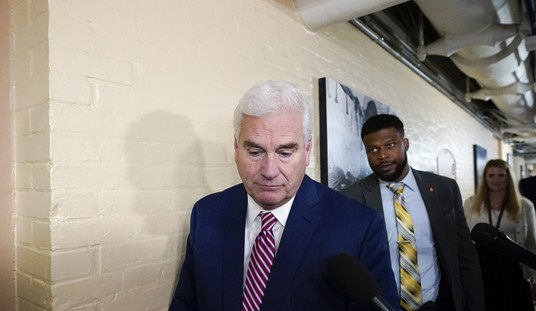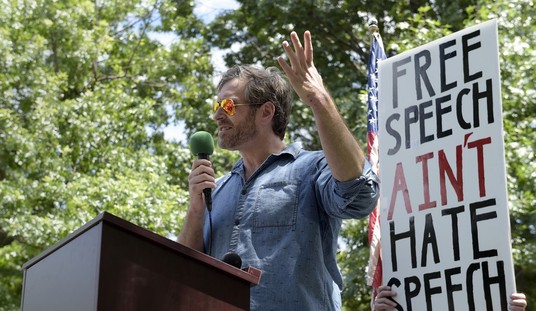The Heartland Institute’s 7th annual International Conference on Climate Change, which ended on Wednesday, could be considered a success on several levels. The more than 300 attendees were brought up to date on the latest research and listened to some top-notch speakers make presentations on various aspects of the debate over anthropogenic global warming. And there were the usual informal exchanges between colleagues that serve to generate ideas and impart knowledge.
But perhaps most importantly, there was a spirit of community among like-minded professionals, some of whom live otherwise lonely lives in their chosen fields of academia and professional associations solely because they do not accept, or because they disagree with, the still-dominant AGW theory. This is real. People pay a professional and financial price for their skeptical beliefs and the ICCC-7 gives many of these brilliant men and women a chance to come together and support each other. One attendee told me it was a “liberating experience” because he had become so used to carefully sounding out colleagues regarding their views on AGW when first meeting them. At the conference, he felt much more at ease and was surprised to actually find himself seeking out strangers to engage in conversation.
This point was brought home by former NASA physicist Hal Doiron, who read an email he received from a colleague whose professional life was, for all intents and purposes, over because of his climate realism. The apostate scientist was unable to gain tenure or even obtain permanent employment in his chosen field despite publishing more than 60 books and articles. There is a war being waged against climate realists — on campus, in the board rooms of foundations and think tanks, and especially in the media, whose practitioners willingly carry water for the scaremongerers, the smear merchants, and those who seek to destroy anyone who challenges AGW orthodoxy.
There was also a sense of optimism among many attendees that the tide may be turning in their favor, or that at least the momentum of AGW proponents is slowing. Veteran Congressman Jim Sensenbrenner, who spoke at Tuesday’s luncheon, highlighted some of the progress made since the last time he spoke to the ICCC in 2009:
When I last spoke, the House of Representatives was poised to pass the Waxman-Markey cap-and-trade bill; the United Nations was promising the extension and expansion of the Kyoto Protocol; and President Obama was touting Spain as our model for a massive increase in renewable energy subsidies.
Three years later, cap-and-tax is dead; the Kyoto Protocol is set to expire; and Spain recently announced that it eliminated new renewable energy subsidies.
We won on these issues because we were right. We highlighted the devastating economics of the proposed solutions and cried foul when proponents tried to bridge gaps in scientific understanding with fear instead of knowledge.
Czech President Vaclav Klaus pointed out the fact that climate “fundamentalists” are being forced to keep a lower profile:
The alarmism has subsided, they want to make it “low profile.” Declarations such as the one in Dr. Pachauri´s manifesto from 1989 that “global warming is the greatest crisis ever faced collectively by humankind” are no longer popular. The former radical alarmists, even the scientists connected with the IPCC, changed their tactic. More and more often we hear carefully worded statements that “some environmentalists, supported by the media, exaggerated the conclusions that had been carefully formulated by scientists.” We know that they were not “carefully formulated.” These “conclusions” were very easy to reformulate.
Dodging the Waxman-Markey bullet may have been a high point, but, as many speakers at the conference pointed out, the failure to pass cap and tax gave Americans only temporary respite. The EPA’s war on coal will result in the closure of 319 coal-fueled generating units totaling 42,895 megawatts, about 13 percent of the nation’s coal fleet, according to the Sierra Club. This will result in consumers being hit with a 10-15% increase in their electric bills by 2015. That’s an extra $150-$330 per year.
So while much has been accomplished, much remains to be done. Former Apollo astronaut and senator from New Mexico Harrison Schmitt believes the number one priority for the skeptical community is to “recapture” youngsters in the K-12 grades. It’s too late for this generation, he says, because they have become so thoroughly indoctrinated. But Schmitt believes it is critical for the future that young people be given the opportunity to be taught both sides of the climate change debate rather than brainwashed to accept the AGW religion.
Beyond that, there is a real problem with trying to get the media to report the position of climate realists accurately. This was brought home by protestors at the conference, many of whom carried signs saying “Climate Change is Real.” As president and CEO of the Heartland Institute Joseph Bast made note of on several occasions, the vast majority of skeptical scientists believe that the climate is indeed getting warmer. That is not now (nor has it ever been) the issue. What climate realists are “denying” (if that’s even the right word) is: 1) that man is primarily, or solely, responsible for the increase in temperature and 2) that the effects of climate change will be catastrophic for humanity.
NASA’s climate hysteric Dr. James Hansen believes that sea levels will rise 75 meters (236 feet) by 2500 if we don’t do something to curtail greenhouse gas emissions. That claim, when repeated during the breakfast session on Tuesday, elicited gales of laughter from the audience. How is it possible to predict anything with any accuracy 500 years into the future? But Hansen is taken seriously by the scientific community and climate realists are smeared as tools of the oil and gas industry.
The problem is that skeptics have allowed the AGW proponents and their allies in the media to define them. Writing in Forbes, Heartland senior fellow James Taylor reported on a recent survey of meteorologists and how their skepticism regarding AGW is used by climate alarmists:
According to American Meteorological Society (AMS) data, 89% of AMS meteorologists believe global warming is happening, but only a minority (30%) is very worried about global warming.
This sharp contrast between the large majority of meteorologists who believe global warming is happening and the modest minority who are nevertheless very worried about it is consistent with other scientist surveys. This contrast exposes global warming alarmists who assert that 97% of the world’s scientists agree humans are causing a global warming crisis simply because these scientists believe global warming is occurring. However, as this and other scientist surveys show, believing that some warming is occurring is not the same as believing humans are causing a worrisome crisis.
[…]
In another line of survey questions, 53% of respondents believe there is conflict among AMS members regarding the topic of global warming. Only 33% believe there is no conflict. Another 15% were not sure. These results provide strong refutation to the assertion that “the debate is over.”
President Klaus laid out the major challenges facing attendees:
Discussing technicalities is not sufficient, because the supporters of the GWD are not interested in them. We are not dealing with people who are authentically interested in science and in incremental changes in temperature and their causes. For them, the temperature data are just an instrument in their plans to change the world, to suppress human freedom, to bring people back to underdevelopment. Their ideas are the ideas of ideologues, not of scientists or climatologists. Data and sophisticated theories will never change their views.
We have to accept that they have succeeded in establishing the religion of environmentalism as the official religion of Western society, as the religion which asks for a radical transformation of the whole Western civilization. We – at least some of us – have to play with them in the arena chosen by them.
The forces arrayed against climate realists are “organized and due to it are able to push this doctrine further ahead because to do so is in their narrowly defined interests,” says Klaus. It’s not about the planet, stupid. It’s about the money. And the power. And the simple, human desire to control. Global warming is the bludgeon that the coalition of governments, corporations, and environmentalists who have been empowered by the United Nations through the funding of non-governmental organizations (NGOs) are using to impose a new social paradigm on the world — one that would destroy capitalism, limit human freedom, and, not coincidentally, make them masters of the earth.
Can it be stopped? Next month in Rio de Janeiro, the Rio+20 conference on “sustainability” will be held. Twenty years ago at the first Rio conference — the first “Earth Summit” — nations adopted “Agenda 21” — a blueprint for disaster. As the conference website states:
Twenty years after the 1992 Earth Summit in Rio, where countries adopted Agenda 21 – a blueprint to rethink economic growth, advance social equity and ensure environmental protection – the UN is again bringing together governments, international institutions and major groups to agree on a range of smart measures that can reduce poverty while promoting decent jobs, clean energy and a more sustainable and fair use of resources.
Rio+20 is a chance to move away from business-as-usual and to act to end poverty, address environmental destruction and build a bridge to the future.
Reading the reports and research papers on that website is extremely illuminating — and not a little frightening. This is not just a question of redistributing wealth on a worldwide scale. Resource sharing, technology transfers, no intellectual property rights, world taxes, transfer payments — it’s all there in black and white if anyone cares to read about it. You couldn’t help but feel a little dismayed looking around at the 300 climate realists who attended the conference and realize how small and disorganized the opposition to this juggernaut really is.
But fewer people have accomplished far more in the past. A handful of colonists challenged the mightiest empire of the 18th century and came out winners. Perhaps if we keep that example in mind, it will embolden and inspire the rest of us to keep fighting the good fight.
There simply isn’t an alternative.










Join the conversation as a VIP Member